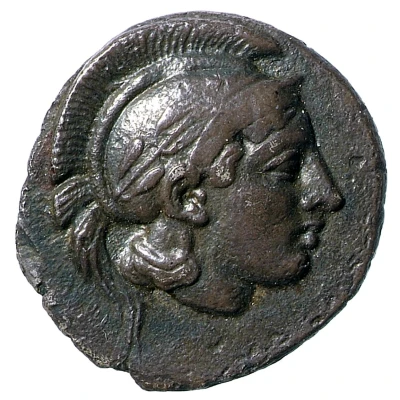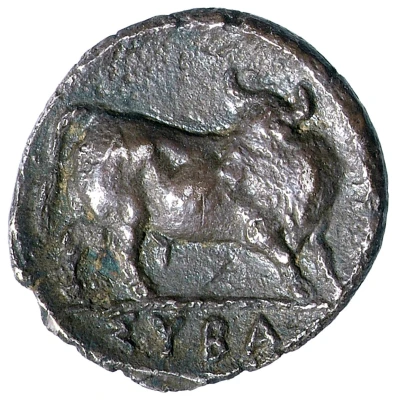


© Trustees of the British Museum
Triobol 446 BC - 440 BC
| Silver | 1.11 g | - |
| Issuer | Sybaris (Lucania) |
|---|---|
| Type | Standard circulation coin |
| Years | 446 BC - 440 BC |
| Value | Triobol (½) |
| Currency | As |
| Composition | Silver |
| Weight | 1.11 g |
| Shape | Round (irregular) |
| Technique | Hammered |
| Demonetized | Yes |
| Updated | 2024-10-10 |
| Numista | N#393517 |
|---|---|
| Rarity index | 100% |
Reverse
Bull standing right, head left.
Script: Greek
Lettering: ΣYBA
Interesting fact
The Triobol coin from Sybaris (Lucania) was used as a form of currency in the ancient Greek city of Sybaris, located in southern Italy, and was made of silver. It weighed 1.11 grams and was used for everyday transactions. Interestingly, the coin features a unique design, with the head of a bull on one side and three dolphins on the other, which symbolizes the city's strong maritime presence and its reliance on the sea for trade and commerce. This coin is a rare and valuable artifact that provides insight into the economic and cultural practices of ancient Sybaris.